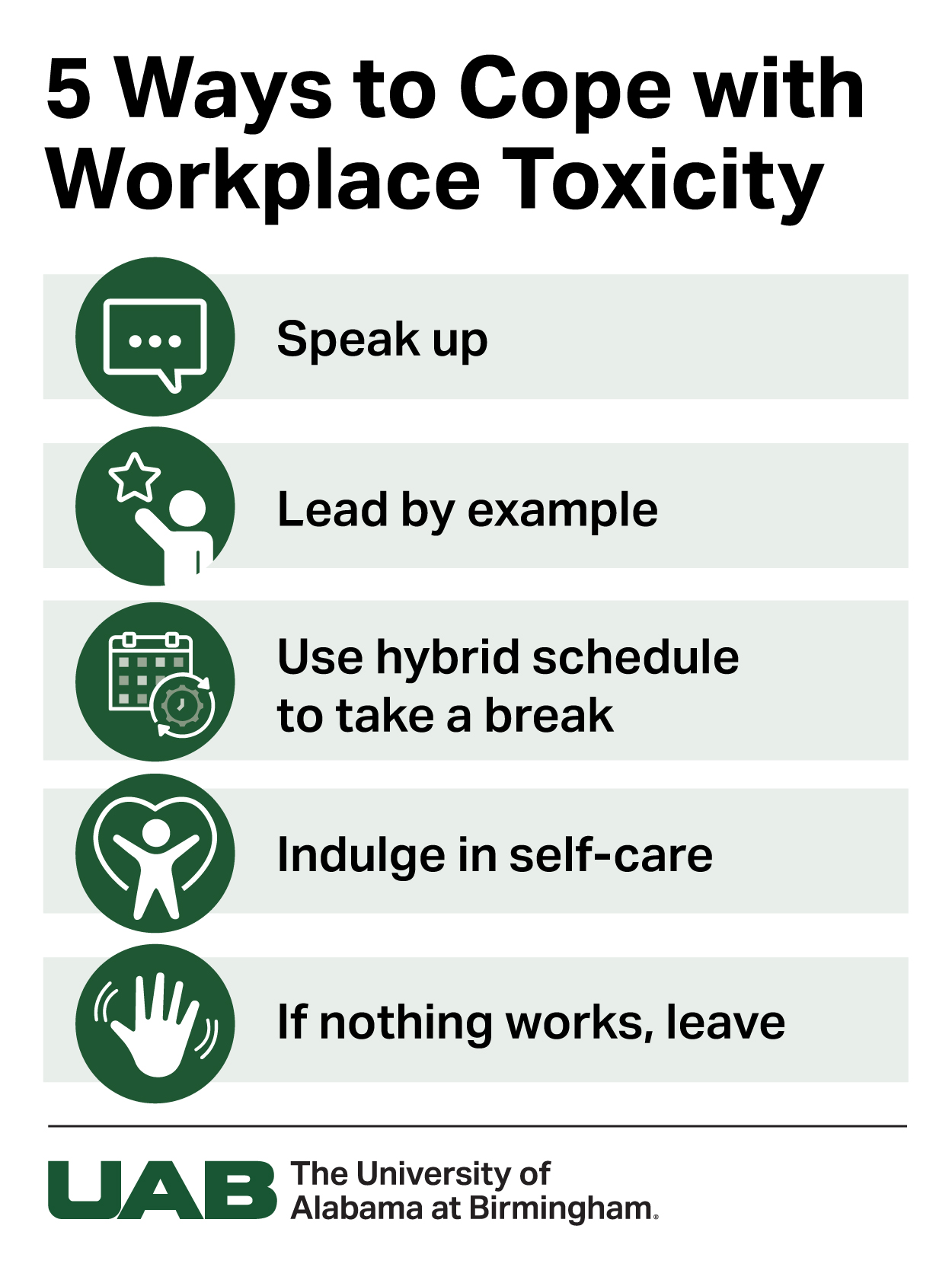 C. Allen Gorman, Ph.D.Workplace toxicity has been recognized as a major source of stress that impacts workers around the world. The United States surgeon general has acknowledged workplace toxicity as a major threat to public health because toxic workplaces are associated with chronic illnesses such as depression, heart disease and cancer, among others. According to a survey of American workers by the American Psychological Association, 19 percent of people labeled their workplace as toxic and 22 percent said their work environment harmed their mental health.
C. Allen Gorman, Ph.D.Workplace toxicity has been recognized as a major source of stress that impacts workers around the world. The United States surgeon general has acknowledged workplace toxicity as a major threat to public health because toxic workplaces are associated with chronic illnesses such as depression, heart disease and cancer, among others. According to a survey of American workers by the American Psychological Association, 19 percent of people labeled their workplace as toxic and 22 percent said their work environment harmed their mental health.
But what is a toxic workplace? According to C. Allen Gorman, Ph.D., industrial-organizational psychologist at the University of Alabama at Birmingham Collat School of Business, workplace toxicity is an abstract term.
“Fear is the primary driver of workplace toxicity,” said Gorman, who serves as an associate professor of management in the Department of Management, Information Systems and Quantitative Methods. “It replaces employees’ excitement and energy through a variety of behaviors including infighting, intimidation and other upsetting situations in the workplace.”
The primary factors that designate a workplace as “toxic” are:
- Favoritism and unfair treatment
- Office politics and gossip
- Disregarding employee feedback
- Poor work-life balance and a culture of overwork
- Unethical, abusive or aggressive leadership
- Disrespect
- Bullying and harassment
- Lack of recognition and appreciation
 Graphic by Jody PotterFive tips to cope with workplace toxicity
Graphic by Jody PotterFive tips to cope with workplace toxicity
Gorman says it is important to acknowledge that workplace toxicity is a multifaceted and multilayered problem in organizations, and “there is no magic bullet to make it go away.”
“Addressing the impact of a toxic workplace requires both individual resilience and systemic change,” Gorman said. “While altering organizational culture is a complex and lengthy process, employees can take meaningful steps to protect their well-being and maintain their professionalism by applying practical strategies.”
Speak up
Speaking up is the most difficult but most important step in managing workplace toxicity. To do this, look for the steps for reporting abuse or mistreatment in a company’s handbook. Document everything to ensure a paper trail of who said and did what and when. Also, talk to a Human Resources representative; employers are legally bound to investigate any complaints about toxic work conditions as soon as they emerge.
“If you see something, say something,” Gorman said. “Sometimes mistreatment gets swept under the rug, and abusive managers can lead with fear and intimidation that can make employees afraid to say anything. But the odds are that, if you feel mistreated, others in your workplace will too.”
Lead by example
To set the tone for a healthy work environment, Gorman urges to quit contributing to office politics and gossip and model good behaviors to be mimicked by others.
“It is important that, if we find ourselves in a toxic work environment, we do not contribute to it,” Gorman said. “If your co-workers are talking about other co-workers, don’t engage in the gossip. If disrespect is the norm, break the mold by not piling on because, if you do so, your complaints of a toxic workplace may not be taken seriously.”
Use remote work to one’s advantage
 Photography: Steve WoodAccording to Gorman, utilizing remote and hybrid schedules as an opportunity to escape the toxic on-site work environment is a great way to cope.
Photography: Steve WoodAccording to Gorman, utilizing remote and hybrid schedules as an opportunity to escape the toxic on-site work environment is a great way to cope.
“If you have work-from-home days, use them to recharge and refocus on the positive aspects of your job,” Gorman said. “Surround your home office with things that bring you joy.”
For people who do not have remote work options, he recommends shutting the office door, dimming the lighting and putting on headphones to play enjoyable music to make the office an energy restoring sanctuary.
For people who do not have an office to escape to, Gorman advises using break time as a chance to recharge and rejuvenate. “Go somewhere quiet where you can escape the office drama, even for a few minutes,” he said.
Practice self-care
Prolonged exposure to workplace toxicity can have major negative health consequences. Therefore, Gorman emphasizes finding outlets outside of work to bring joy and restore the mind and the body.
“We cannot always control treatment from others at work, but we can control how we treat ourselves,” Gorman said. “It is common for us to push our self-care routines aside as we deal with other obligations. But remember, self-care is not selfish. We cannot show up for those we care about if we do not show up for ourselves.”
To reduce work and home stress, he recommends several ways: going for a walk, jogging, yoga and meditation, playing an instrument, catching up on a favorite book, watching a movie, eating healthy, and getting enough sleep.”
The last resort: leave
If toxicity rises to unbearable levels, leaving is always an option. Tough economic situations make this easier said than done, but research proves the rewards of leaving a toxic environment are mostly better jobs –– both environmentally and financially.
Learn more about workplace toxicity from Gorman on Wednesday, Nov. 13 at the Society for Industrial and Organizational Psychology's event.
“If you cannot fix the situation at work, you can always change where you work,” Gorman said. “Build and broaden your network by attending networking and industry events and meeting new people so that, when an opportunity arises, you can capitalize on your connections. Take additional courses or obtain new certifications to polish your skills.”
Gorman reminds people that leaving a toxic workplace is not a sign of failure but rather a testament to personal strength and self-respect.